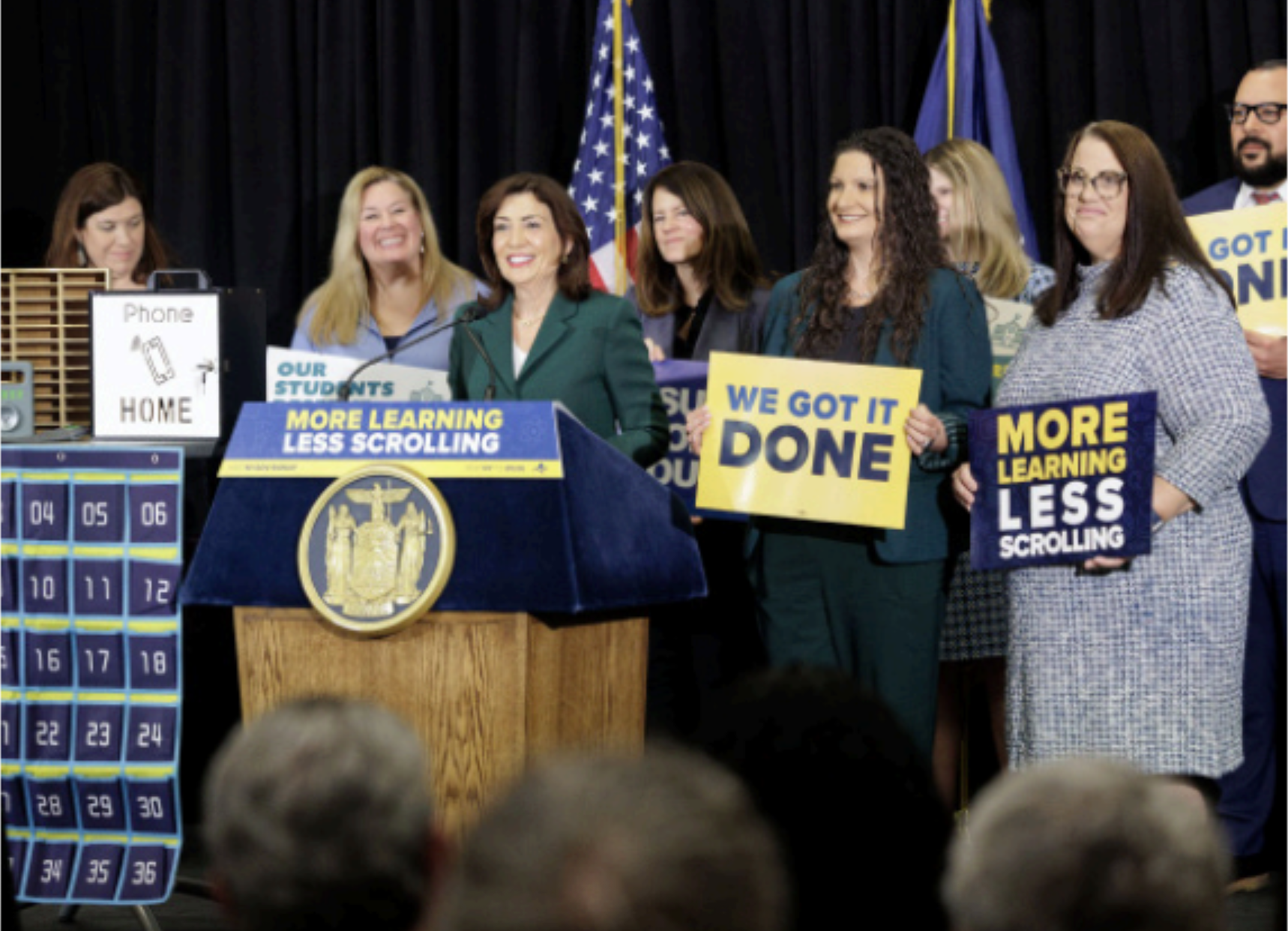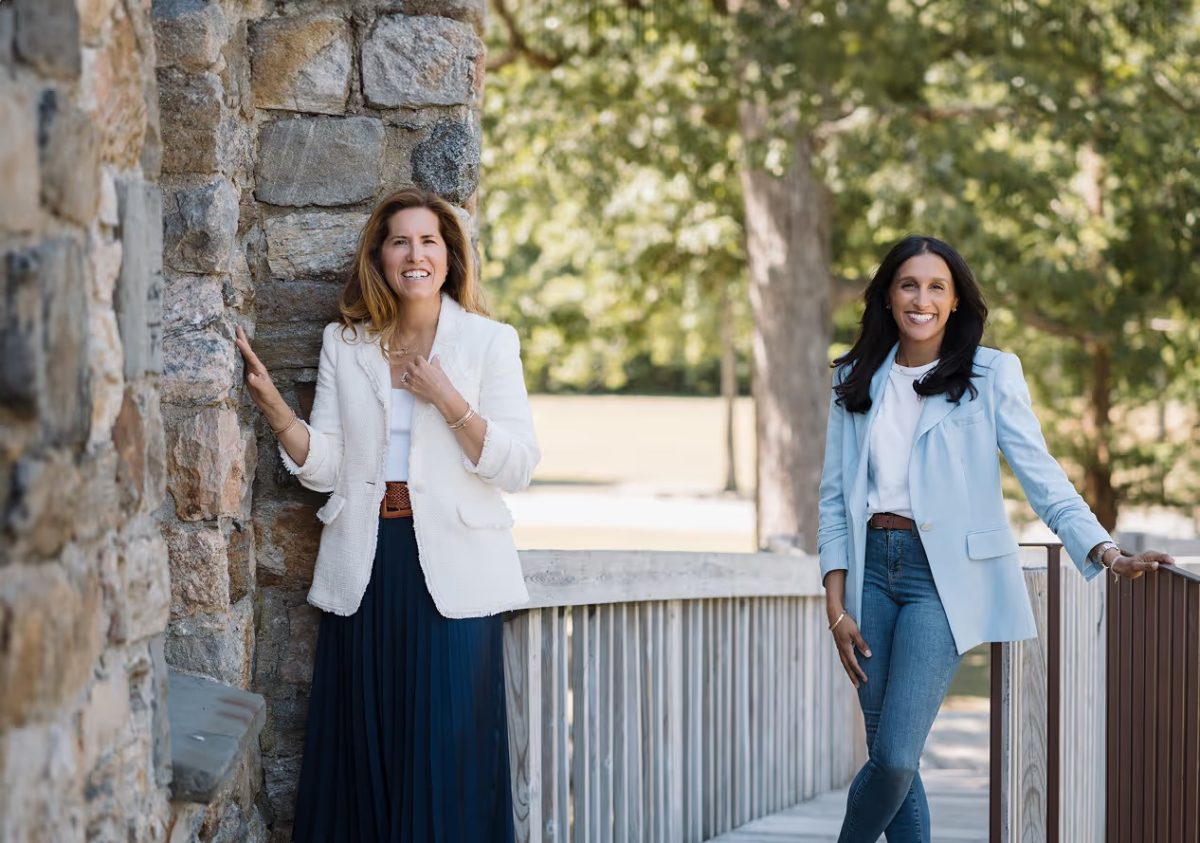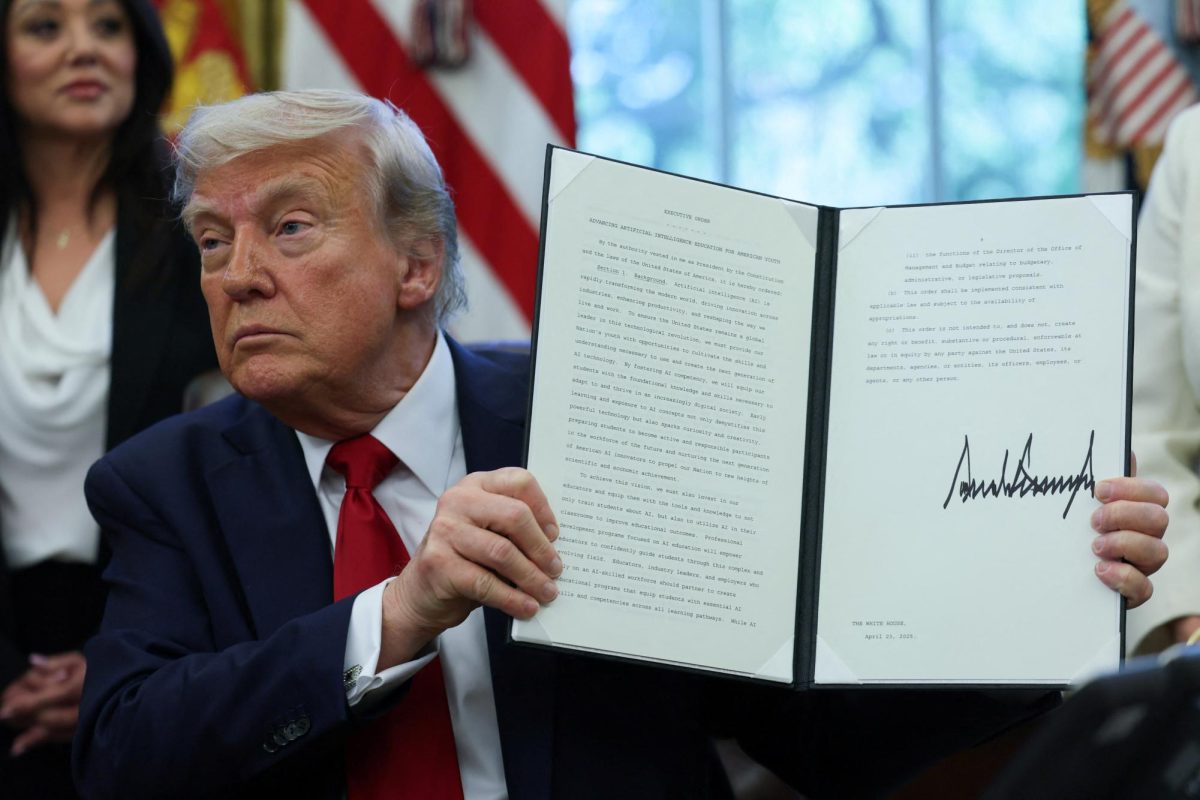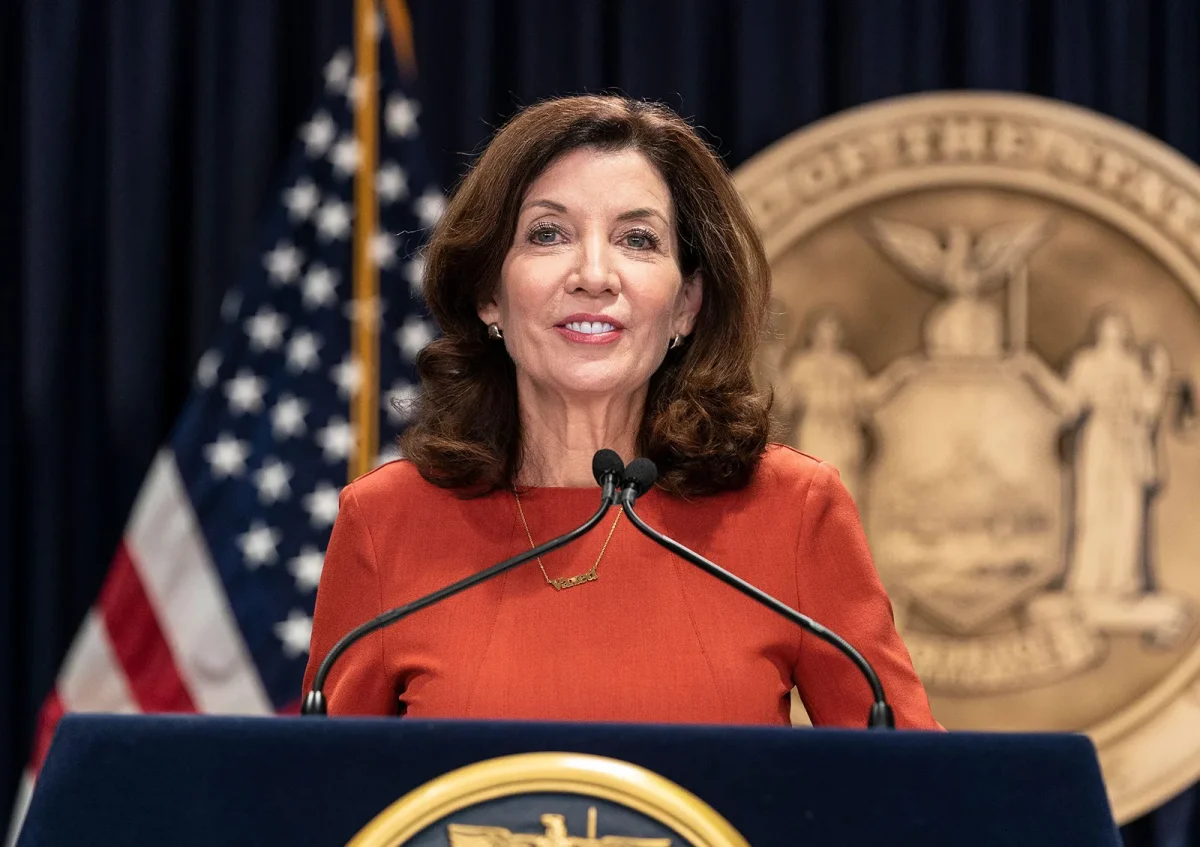On May 6, 2025, Governor Kathy Hochul announced new statewide restrictions on student cell phone use in schools, requiring districts to enforce stricter limits throughout the entire school day. The updated mandate is consistent across New York’s public schools and follows earlier efforts to curb phone use but sets clearer expectations for both students and teachers.
At Mamaroneck High School, the policy has been visible since the start of the year. Teachers have been instructed to actively enforce the rules, and many have begun calling out students who use phones in hallways or during transitions. In classrooms, students are required to place their devices in wall-mounted holders at the start of each period, checking in by marking off their assigned slot.
Students have raised concerns about the effectiveness of the new measures. “Having to store away cell phones every class period won’t necessarily help me concentrate,” said Elsie Scerbo (’26). “It would be bold to assume that all distractions are eliminated once you take away a student’s cell phone. The phone may not be physically in their hands, but their minds wander off anyway.”
Others have pointed out that phones play roles beyond being a simple distraction. “The new cell phone policy doesn’t help students focus in class,” said Lillie Nubile (’26). “Students can find other ways to message each other without phones. And more importantly, not having phones readily available makes it harder to contact parents or authorities during emergencies.”
Teachers, however, see benefits. “Phones are designed to be distracting—it’s the phones, not the students,” said history and sociology teacher Ms. Katz. She added that cell phone use in class is not just a Mamaroneck problem but one facing schools statewide. Some educators believe the policy may help students better engage with lessons and reduce disruptions, particularly in large classes.
Still, questions remain about the future impact. While some teachers welcome the policy as a means of restoring focus, others worry the enforcement may strain classroom dynamics. Students continue to express frustration over losing access to their devices during the day, especially for communication and safety reasons.
As the 2025–26 school year continues, schools across New York will be monitoring how the policy plays out in practice. Whether the restrictions succeed in improving classroom engagement, or simply create another point of tension between students and administrators, will become clearer in the months ahead.Picture this: It’s mid July and you’re relaxing on a hammock in the middle of a deserted beach mid sip of a pina colada when suddenly, your phone dings. You pick it up to see a notification pop up on your lockscreen from the school. “New Cell Phone Policy.” Yuck. You make a face at your phone, and begin reading through it. You proceed to have multiple arguments in your head about how much you detest this new policy, but soon realize there’s nothing you can do about it.
The new and improved cell phone policy was announced on May 6, 2025 by New York State Governor, Kathy Hochul. This policy requires New York schools to implement restrictions of cell phone usage by students during the entire school day.
The cell phone policy had already made its introduction last school year, but the latest state mandate has made it even stricter. Many have already noticed that teachers are calling out students that are using cell phones in the hallways. When students enter a classroom, they are required to store their phones in those bedazzled blue holders hanging on the wall and mark off their number. Students have a lot to say about the new cell phone policy. Many students, like Elsie Scerbo (26’), believe that “having to store away cell phones every class period won’t necessarily help [her] concentrate.” She also feels that it would be bold to assume that absolutely all distractions are eliminated once you take away a students’ cell phone. The phone may not be physically in their hands, but their minds wander off anyway.
Lillie Nubile (`26) echoed these concerns, stating that “the new cell phone policy doesn’t help students focus in class.” She also points out that students can find other ways to message each other without phones. More importantly, she worries that not having phones readily available makes it harder to contact parents or authorities during emergencies.
Many teachers, however, see it differently. Ms. Katz, a history and sociology teacher at MHS, claimed that “phones are designed to be distracting—it’s the phones, not the students.” She also emphasized that cell phone distractions are a statewide problem, not just a Mamaroneck issue.
At the end of the day, no one knows how this will play out. Only time will tell whether the new policy proves helpful—or just another disruption—in the 2025–26 school year.










